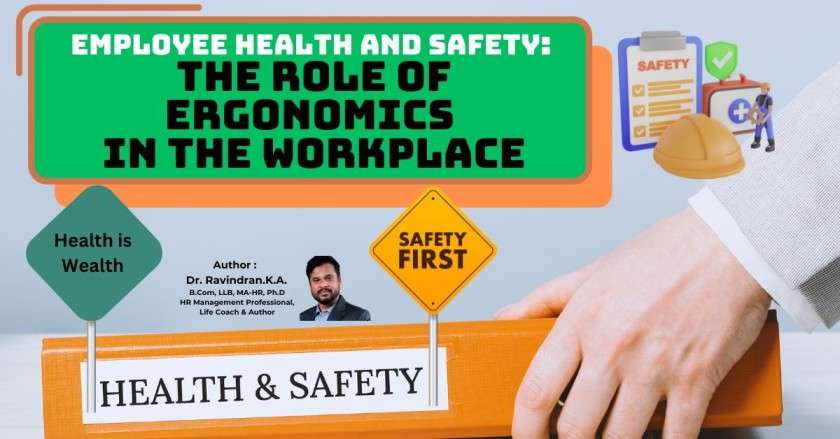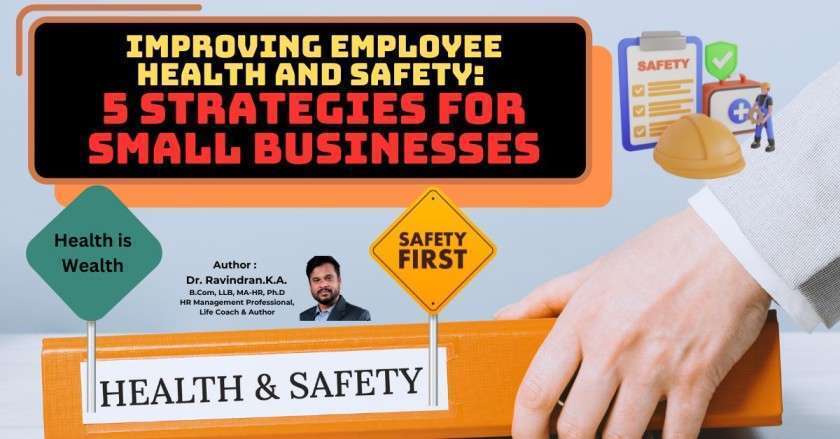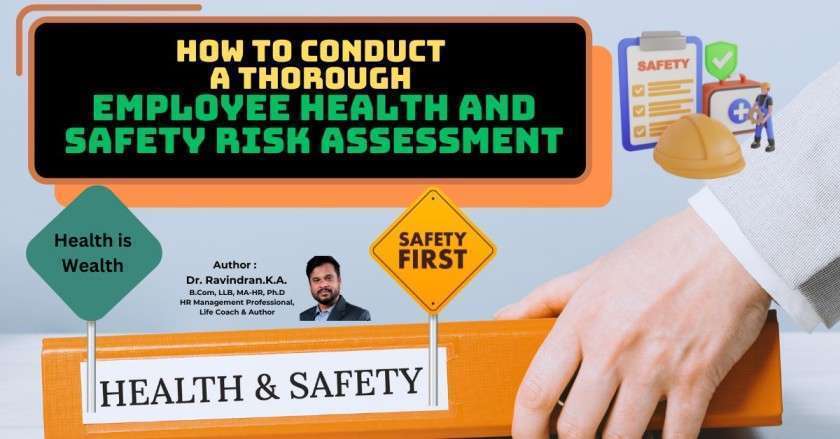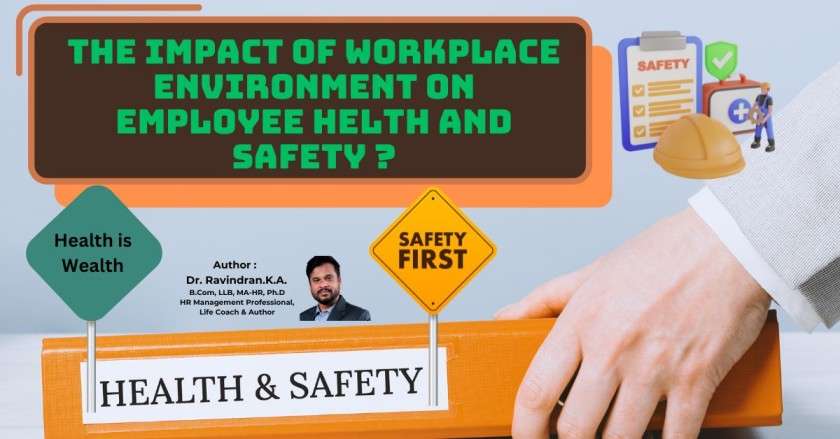“Effective Employee Health and Safety Training Programs: A Step-by-Step Guide”
In today’s quick business world, keeping employees safe is top priority. But, ever asked, “Are your current safety training programs truly effective?” This guide will show you a detailed way to make your health and safety training work. It will help turn your workplace into a safer and better place.
Thank you for reading this post, don't forget to subscribe!Key Takeaways
- Understand why employee health and safety training is important. It helps stop injuries and sickness, makes sure you follow the rules, and saves money.
- Find out the kinds of training there are. This includes what all employees need to know, what’s specific to your job, and what the law requires.
- Learn to spot different dangers at work. These could be things like too much noise, chemicals, germs, or how the work area is set up.
- See the steps to start a quality training plan. This covers checking what you need, making the training, checking how things are going, and always trying to do better.
- Find ways to show your team that safety matters. Creating a strong safety culture is important for everyone to work together safely.
Importance of Employee Health and Safety Training
The top goal of health and safety programs is to keep people safe at work. This includes stopping injuries, sickness, and even death. These events not only affect workers but also their families and employers too. Safety training programs are important. They help companies deal with occupational hazards, follow laws, cut costs, and do better in their work. Taking a proactive stance on safety and health can even change the workplace culture. This means companies can focus more on preventing problems than just fixing them when they happen.
Preventing Workplace Injuries and Illnesses
Every year, millions of work-related accidents and illnesses happen globally. More than two million people die from these accidents across the world. But effective health and safety training can significantly lower these numbers. Training workers well means they know how to do their jobs without risking their safety.
Improving Compliance with Laws and Regulations
In India, there’s a law from 1948 that says factory owners must keep their workers safe. This includes giving them the right information, training, and supervision. Compliance training helps businesses follow these types of laws. This can keep them from getting fined for breaking health and safety rules.
Reducing Costs and Increasing Productivity
Spending on health and safety training is a smart move. It can cut down on costs from accidents and sickness at work. This means fewer medical bills and less lost work time. Good safety practices can also make employees feel valued. This boosts morale and makes workers miss fewer days. All of this can make a company more productive and save them money in the long run.
Types of Safety Training Programs
For a safe workplace, companies need specific safety training programs. These programs are vital for safety and meeting rules like OSHA’s.
General Safety Training
General safety training gives a wide view of safety steps and top methods. It teaches workers basic safety rules. They learn about emergencies, spotting dangers, and other general safety tips.
Job-Specific Training
Job-specific training zeros in on each job’s unique safety needs. This means workers learn just what they need. It cuts down on accidents and injuries at work.
Regulatory Compliance Training
Compliance training covers safety rules and laws. It makes sure workers know and follow regulations. This includes OSHA’s standards and other rules for a safe workplace.
With the right safety training, companies build a culture of safety. They follow the law and protect their workers.
Identifying Workplace Hazards
Spotting workplace hazards in your job place is key to keeping everyone safe and healthy. These dangers come in many forms, like things that can hurt your body, bad chemicals, germs, and even how you work.
Physical Hazards
Falling, loud noises, and very hot or cold places are all physical workplace hazards. It’s important to look carefully for these dangers and make sure we keep safe from them.
Chemical Hazards
Some jobs have chemicals that can be dangerous if handled wrong. Workers need to learn how to store, use, and get rid of these chemicals safely.
Biological Hazards
In places like hospitals, employees may come into contact with germs that can make them sick. Knowing how to use protective gear and clean up is crucial to staying safe.
Ergonomic Hazards
Sitting or moving badly at work can hurt your muscles and make you sore. Learning the best ways to sit, move, and do your tasks can keep you from getting hurt.
Training everyone to find and deal with the different occupational hazards makes a workplace better. It helps build a company where everyone looks out for each other, promoting safety and health for all.
Effective Employee Health and Safety Training Programs
Effective employee health and safety training programs are key for a safe workplace. These programs should engage employees and build a culture of safety. They should also give workers the skills to spot and deal with dangers at work. This helps employees actively keep their work area safe. It also means less expenses, better rules following, and a stronger business.
In a 2023 survey by Forbes, 59% said they got no workplace training. This shows a big lack in training. To fix this, companies need to make employee health and safety training programs a top priority. These programs should meet legal rules, boost a safety culture, and get employees involved.
| Key Benefits of Effective Safety Training Programs | Impact |
|---|---|
| Prevent workplace injuries and illnesses | Reduces human suffering and financial hardship for workers and their families, as well as employers |
| Improve compliance with laws and regulations | Helps businesses avoid costly fines and legal penalties |
| Reduce costs and increase productivity | Significant reductions in workers’ compensation premiums and increased overall business operations |
| Foster a culture of safety and employee engagement | Empowers employees to take an active role in maintaining a safe workplace |
Implementing comprehensive employee health and safety training programs makes workplaces safer. It boosts compliance, cuts costs, and fosters a safety-first mindset. This brings everyone together to make the work environment better for all.
Implementing a Safety Training Program
Implementing a safety training program follows three key steps. First is assessment, where the organization’s needs are found. Then comes development, creating the actual program. Finally, there’s evaluation to see how well the program works. This approach makes sure the safety training program fits the company, keeps employees interested, and meets goals.
Assessment
The first step is looking at what the organization needs. Clear goals are set, and the program’s plans come together. This means understanding work hazards, risks, and what employees think. It leads to a safety training program that tackles the company’s unique safety challenges.
Development
Next, it’s time to make the training interesting and effective. The right tools and methods are picked. Proper scheduling ensures everyone can take part. Training on spotting hazards and knowing safety rules is included. This empowers everyone to help keep the workplace safe.
Evaluation
The final step is checking how well the program works. Feedback is gathered from those involved. The program’s success is measured. It also includes making the program even better based on what is learned. Regular checks on the program’s impact keep safety a priority in the company.
Demonstrating Company’s Commitment to Safety
A good safety culture starts by showing the company is all in for safety at work. This means making safety a key part of the mission statement. It also means having the top folks lead by showing safety matters to them. Plus, it’s about looking into all accidents at work, even the small ones.
Mission Statement and Values
When a company puts safety deep in its mission and values, it tells workers they are cared for. This should run all the way from the top boss to the newest worker. Having safety as a big part of the company’s identity helps everyone work together to keep their space safe.
Management Accountability
Top bosses should not just talk about safety; they need to do it, too. They lead efforts to be safe and make sure all rules are followed. And if there are safety problems, they step up to fix them. This kind of leadership helps make safety a big deal for everyone.
Accident Investigation
Looking closely at all accidents is key to showing how serious a company is about safety. The goal is to find out what caused the problem and fix it to stop it from happening again. This forward-thinking about accidents shows a company is always trying to do better on safety.
Making sure safety is number one shows in the way everyone talks and acts. It lets workers be part of keeping things safe. This really builds a strong safety team and shows the company is all about safety culture. It also proves how much management commitment and accident investigation matter.
Assessing Workplace Risks and Hazards
Making a good employee safety program starts by looking at workplace dangers and risks. We use many methods like expert checks, talking to workers, and collecting data from surveys. This helps us find and organize the dangers.
Professional Assessments
Experts and professionals should check the workplace closely for dangers (known as workplace risk assessment and hazard identification). This includes looking at work spaces, machines, and how things are done, and reading about past accidents and safety rules.
Employee Feedback and Surveys
It’s key to listen to what the workers say through surveys and talks. People who work in the place every day notice dangers that others might miss. Their input is vital for spotting risks that need fixing with special safety training.
Categorizing Hazards
After checking the place, it’s time to put the dangers into groups, like physical or chemical hazards. Doing this helps bosses make safety plans that fit the actual dangers their workers face every day.
Creating a Written Safety Protocol
Identifying workplace hazards is vital. The next step is to make a detailed safety plan. This plan must show the company’s safety rules and steps. It’s key for building a solid safety culture and making everyone accountable.
Clear Job Descriptions
The safety plan starts with clear job roles. This helps everybody know what they should do to keep things safe. Each person knows their specific safety duties. This stops confusion and helps all workers keep the workplace safe.
Safety Responsibilities
Every worker’s safety job must be clear, from the newest to the top bosses. This makes sure everyone knows how they help to keep safety rules. It boosts the safety culture across the whole company.
Reducing Ambiguity
Having a strong plan helps cut down on unclear safety rules. With a clear safety plan, everyone takes their safety duties seriously. They work together to keep their place of work safe. Doing this strengthens the safety culture and makes the workplace safer for all.
Conclusion
It’s key for businesses in India to have strong employee health and safety training programs. This guide shows how companies can make safety training initiatives that stop workplace injuries and illnesses. Such programs also boost compliance, cut costs, and build a culture of safety.
They start by spotting workplace hazards and showing bosses are committed. They write down safety rules and check if the programs work. This guide gives a full plan for making employees’ safety a top priority.
By putting workplace safety first and using the best effective safety training, Indian companies protect their staff. This leads to saving money, keeping employees longer, and having a better company reputation as a safe, caring place to work.
It’s smart business to invest in employee health and safety. Following this advice means Indian firms can make safer workplaces. They’ll build a culture of safety and stand as the best in effective safety programs.
FAQ
What are the main goals of employee health and safety training programs?
The main goals of these programs are clear. They aim to prevent injuries, illnesses, and even deaths at work. They also help everyone involved — workers, families, and companies. Such training ensures everyone knows and follows safety laws. It cuts costs, boosts productivity, and improves business operations.
What are the common types of safety training programs?
There are a few types of safety training. General safety training offers a wide look at safety rules. Job-specific training focuses on the unique safety needs of each job. And regulatory compliance training makes sure everyone follows safety laws.
What are the common workplace hazards that safety training programs address?
There are quite a few common hazards at work. These include physical dangers like slips and handling extreme weather. There are also chemical risks and risks from pathogens (in healthcare mainly). Poor ergonomics can cause long-term muscle and joint problems.
What are the key steps in implementing a successful safety training program?
Creating a good safety training program involves three main steps. First is assessment. This means figuring out what training is needed and making goals. Second is development. This is about making the training and choosing how to give it. Last is evaluation. After the training, collecting feedback and looking at its success helps make it better over time.
How can employers demonstrate their commitment to workplace safety?
To show they’re serious about safety, employers should do a few things. They can make safety a central part of their company’s goals. The bosses should be big on safety themselves and make sure everyone follows the rules. Plus, they must thoroughly check any accident at work to learn and prevent future incidents.
How should employers assess workplace risks and hazards?
Checking work risks is key. Employers should use safety experts and hear from workers. They should group dangers by where they happen, the kind of work, and the environment. This makes it easier to find good solutions.
What should be included in a written safety protocol?
A good safety protocol lays out the company’s safety rules and steps clearly. It says everyone’s role in safety and cuts down on confusion. This makes sure all workers know how to keep their workplace safe.
 hroptimum
hroptimum



